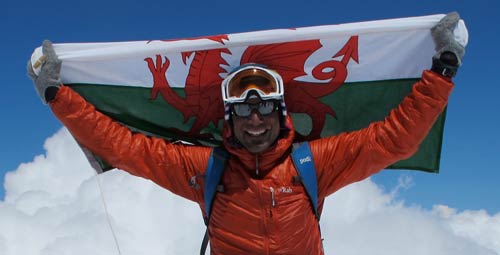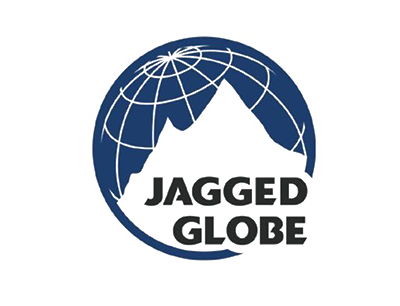Hey guys, been re-packing and sorting all my stuff for Kili. There's been a lot of washing to do. Really looking forward to getting back on the mountain, we leave on Saturday and I can't wait to meet the team climbing with me.
- 737 Leg 4 Kilimanjaro
- Blog & Diary
- Multimedia
- Expedition Facts
737 Leg 4 Kilimanjaro
Richard summited the highest freestanding mountain in the world and Africa's tallest peak alongside Marie Curie Cancer Care nurse Janet Suart, friends and family.
It was a special leg for Richard with every member of the team raising considerable funds for Marie Curie Cancer Care and making the summit successfully alongside him.
The extinct volcano of Kilimanjaro is one of the world's most recognisable peaks, as It rises dramatically above the dusty East African plains in Tanzania with an impressive snow-capped summit.
Richard, Janet and the team climbed the Lemosho Glades route, a superb rising traverse on the most attractive side of Kilimanjaro, designed with maximum acclimatisation and summit success in mind.
The views of the western and southern aspects of Kilimanjaro are superior to those on the northern routes, and the route is less travelled than the well-trodden tourist trail from Marangu, which is used by the vast majority of people who attempt the mountain in a five-day dash up and fail to reach the top, due to altitude sickness.
Kilimanjaro is unique in that during the ascent climbers travel through varying climate zones; starting with tropical rainforest, through moss, quasi-desert and a snow covered glacial summit. A popular mountain, sometimes underestimated due to many celebrity climbs, Kilimanjaro at nearly 6,000m is a serious mountain and should be respected.
Often a Kili summit day can be just as long as a summit day on Everest and as Richard's team found out, in temperatures below -20˚C, a Kili summit can be arduos in its own right. The rewards are high though, and on the morning of 27th February 2011, Richard, along with friends and family were treated to one of most spectacular sunrises Richard has witnessed on a mountain. The team summited at 7.57am local time after leaving high camp at midnight.
737 Leg 4 Kilimanjaro - Day 78 - Sunday 27th Feb 2011
Hi Guys, well we left High Camp (Barafu Camp)at Midnight local time and summitted in just under 8 hours at 4.57am UK time, 7.57am local time. The best news is that the whole team reached the summit, despite temperatures of -19'c. It was a really tough…
read more »
Older Blog Posts
737 Leg 4 Kilimanjaro - Day 76 - Friday 25th Feb 2011
Hey guys, arrived at Karanga camp, (13,300ft/ 4,005m) after 4hrs trekking. The Barranco wall was loads of fun today, a 300m scramble. Even the most apprehensive of the group enjoyed it! We spent most of the day deep in debate over picking our British…
read more »737 Leg 4 Kilimanjaro - Day 75 - Thursday 24th Feb 2011
Quick update today as I don’t have much battery and there is no sun to charge my solar panel. Been a long day today, 8 hours trek to Barranco Camp which is the most spectacular campsite at the foot of the Kibo peak. We did trek to 4600m as part of our…
read more »737 Leg 4 Kilimanjaro - Day 74 - Wednesday 23rd Feb 2011
I can't get signal in my house but I can at 3850m, Shira 2 camp on Kilimanjaro! Ha! There’s a rock that if you stand on it you can get signal! We had a 4hr trek to camp 3 – Shira 2 camp today, allowing the team an important afternoon to rest and…
read more »The extinct volcano of Kilimanjaro is one of the world's most recognisable peaks, as It rises dramatically above the dusty East African plains in Tanzania with an impressive snow-capped summit.
Fact 1
Mount Kilimanjaro is not only the tallest mountain on the African continent, but the highest free-standing mountain in the world.
Fact 2
The name Kilimanjaro has no certain origin, but one of the most popular theories is that it came from KILMA NJARO meaning “shining mountain” in Swahili.
Fact 3
Kilimanjaro has three volcanic cones named Mawenzi, Shira and Kibo. Mawenzi and Shira are extinct, however Kibo, the highest peak, is dormant and could erupt again. The most recent activity was about 200 years ago.
Fact 4
Published research predicts that if global temperatures continue rising Kilimanjaro could loose its ice completely within two decades. Local communities and economies depend on the glacial melt waters coming from the mountain.
Fact 5
Coffee is grown on the lower slopes of the mountain and is a major export trade for the region.







































